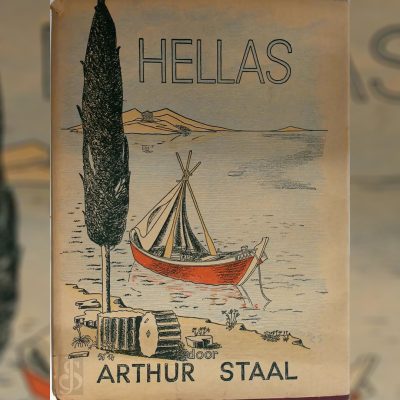with Nikol Liakostavrou
ARTHUR STAAL: TRAVEL NOTES ON THE GREEK LANDSCAPE
(written by Foivos Panigirakis)
Arthur Staal, a young Dutch architect, published the book “Hellas: Een reis door Griekenland” (Hellas: A Journey through Greece) in 1944, during the Nazi occupation.
He had travelled throughout the Mediterranean—Africa, Europe, Asia. He came to Greece twice, inspired by the influence of Le Corbusier. From a young age, Staal developed a dialectical relationship with nature and culture, which he considered the essential foundations for any architectural expression.
He emphasized that both Dutch and Greek character seek a light, open kind of architecture—“with windows open to the sea and the horizon.” Therefore, such architecture, he argued, should steer away from the “colossal super-monumentality” of the Romans, the “picturesque” of the English, or the “rustic” of the Germans.
“Why are these Greek landscapes so much more beautiful than similar ones elsewhere? Even though there are many comparable regions, like Italy or the South of France, why do they still stand out? Likely because of the light. Because of the unparalleled clarity of the sky, because of this piercing light. The aether! And beyond that—history!
The pine trees are so vividly green, it’s as if they were just created. The sky is blue—so very blue—with a few wispy clouds floating by. The earth is a reddish brown, and the rocks range in color from yellow to grey and everything in between, all with a transparent quality,” he writes.
From the book “The Modern Gaze on Greek Nature,” published by the Greek working group DO.CO.MO.MO. and the School of Architecture and Engineering of the Technical University of Crete. The book was edited by Amalia Kotsaki, Assistant Professor at the School of Architecture, Technical University of Crete, and Kostas Tsiampalos, Assistant Professor at the NTUA School of Architecture and Coordinator of DO.CO.MO.MO. Greece.
